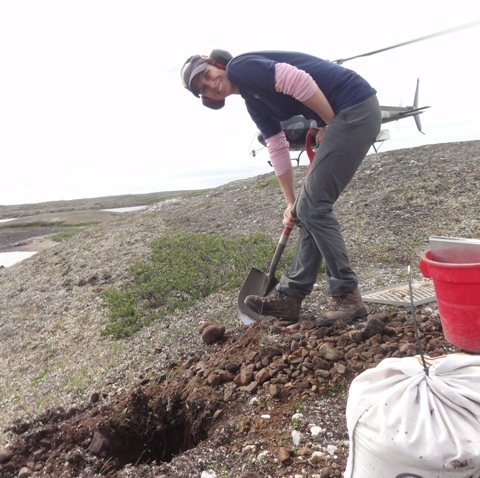By: Nicole Januszczak, DeBeers
The Attawapiskat kimberlite field is located in the James Bay Lowlands of northern Ontario, approximately 90 km west of the coastal community of Attawapiskat First Nation. Victor Mine is one of 23 kimberlite pipes discovered within the Attawapiskat kimberlite field, 21 of which have been tested for diamonds with all reporting positive results. It is Ontario’s first diamond mine and the second in Canada for De Beers.
The initial discovery of Victor Mine and 15 satellite pipes occurred in 1988 from stream sampling and airborne magnetic data. Additional discoveries were made in 1995, 2001, 2004, and 2008. The Attawapiskat kimberlites are middle Jurassic in age (174-179 Ma) and their emplacement is coincident with an extensional Mesozoic tectonic regime in eastern North America associated with the rifting of Pangea and opening of the proto-Atlantic Ocean.
The kimberlite pipes are emplaced into flat-lying Paleozoic sedimentary rocks which unconformably overlie Archean basement of the Superior Province. The pipes vary in size from less than a hectare to 17 hectares. Their morphologies and locations are influenced by major structures that have been reactivated in the Paleozoic and in the recent past as evident in remotely sensed imagery.
The pipes within the Attawapiskat kimberlite field have undergone complex emplacement processes and the resultant internal geology is highly variable. Mineral chemistry in combination with whole-rock chemical composition, petrology and various petrophysical data are used to characterize distinct internal geological units and develop 3D geological models. 3D geological models are further constrained by various geophysical inversion and magnetotelluric techniques. As diamond content varies between geologic units, a robust geological model is required to design and execute a representative bulk sampling program.

Bio:
Nicole Januszczak is currently Targeting and Review Manager for De Beers Group of Companies in Canada where she is responsible for targeting and the ultimate delivery of new economic diamond deposits in Canada.
Nicole was born in Toronto and graduated with a B.Sc. (Honours) degree from the University of Toronto. She subsequently obtained a Masters degree at the University of Toronto with studies on the Cenozoic glaciation of Antarctica preserved in the offshore record. She gained her doctorate from the University of Toronto with a field-based study of Neoproterozoic glaciation focusing on the sedimentology of type sections in Namibia.
Her geological studies and subsequent career have enabled Nicole the opportunity to work on every continent, both on land and at sea. Nicole has been working with the De Beers Group of Companies since 2005. While focused on exploration potential in Canada, Nicole has had the opportunity to provide technical assistance to projects in Angola, India and South Africa.
Nicole is a registered Professional Geoscientist with the APGO. She is a passionate geologist who enjoys sharing her enthusiasm and talking to students about the challenges, rewards and excitement of being an Exploration Geoscientist.